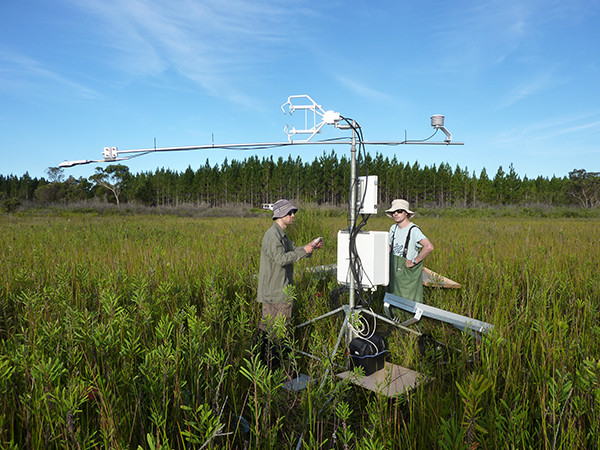As world temperatures rise, the rate at which plants in certain regions can absorb carbon dioxide is declining, according to University of Queensland research.
Over a three year period, researchers took direct measurements of plant absorption of CO2 in subtropical coastal ecosystems in eastern Australia.
Professor Hamish McGowan, from UQ's School of Earth and Environmental Sciences, said the team found the optimum temperature for photosynthetic production was routinely exceeded in these regions.
"Plants' optimum temperature range for photosynthesis in our study area is between 24.1 and 27.4 degrees Celsius," Professor McGowan said.
"But due to anthropogenic climate change, temperatures - particularly in warmer months - often go well beyond this 'healthy' range for carbon absorption.
"It was eye opening - temperatures exceeded this range between 14 and 59.2 per cent of the time, depending on which site you were looking at.
"Plants in these regions simply aren't able to absorb carbon like they used to, which is seriously concerning."
The research team also measured the rate at which photosynthesis was occurring, with alarming results.
"Once this temperature range is exceeded, the ability for plants to appropriate carbon falls off a cliff," Professor McGowan said.
 "Sequestering carbon is incredibly important right now - we need to drastically reduce the greenhouses gases in our atmosphere to maintain a healthy climate for us and future generations.
"Sequestering carbon is incredibly important right now - we need to drastically reduce the greenhouses gases in our atmosphere to maintain a healthy climate for us and future generations.
"We are seeing through observational evidence that a dangerous positive feedback loop is being created, making the world even hotter."
Professor McGowan said the effects of a changing climate on rainfall in subtropical ecosystems were compounding the issue.
"While future warming will cause rainfall in some tropical regions to increase, in the subtropics and Mediterranean climate zones it is likely to decrease," he said.
"This inevitably leads to reduced growth and increased risk of tree mortality, reducing even further these areas' potential to sequester carbon dioxide.
"Much of the current modelling doesn't capture these nuances - the ongoing sequestered carbon we were counting on in subtropical coastal regions might not come to pass.
"There's an urgent need to extend our research to other biomes so that the effects of temperature and moisture availability on carbon sequestration by photosynthesis can be quantified.
"It's critical we have up to date information, temperature predictions and realistic carbon budgets.
"But most importantly, the world needs an effective global agreement to markedly reduce carbon emissions to the atmosphere."
The research has been published in JGR Biogeosciences (DOI: 10.1029/2020JG005678).






